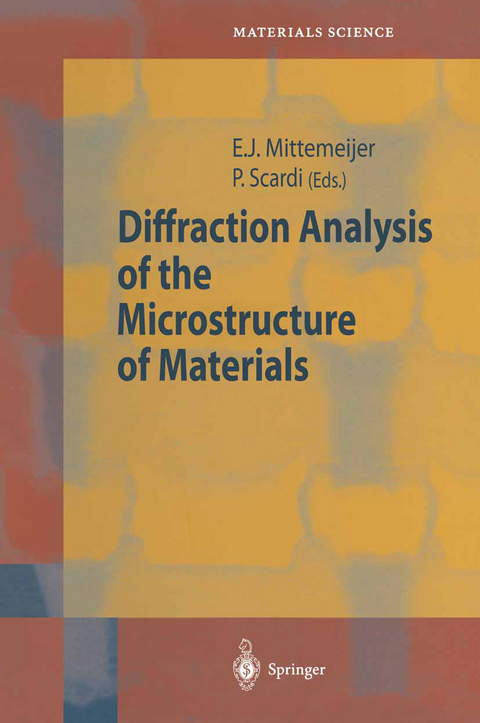
Diffraction Analysis of the Microstructure of Materials
Springer Berlin (Verlag)
978-3-642-07352-6 (ISBN)
Diffraction Analysis of the Microstructure of Materials provides an overview of diffraction methods applied to the analysis of the microstructure of materials. Since crystallite size and the presence of lattice defects have a decisive influence on the properties of many engineering materials, information about this microstructure is of vital importance in developing and assessing materials for practical applications. The most powerful and usually non-destructive evaluation techniques available are X-ray and neutron diffraction. The book details, among other things, diffraction-line broadening methods for determining crystallite size and atomic-scale strain due, e.g. to dislocations, and methods for the analysis of residual (macroscale) stress. The book assumes only a basic knowledge of solid-state physics and supplies readers sufficient information to apply the methods themselves.
1 Line Profile Analysis: A Historical Overview.- 2 Convolution Based Profile Fitting.- 3 Whole Powder Pattern Modelling: Theory and Applications.- 4 Full Profile Analysis of X-ray Diffraction Patterns for Investigation of Nanocrystalline Systems.- 5 Crystallite Size and Residual Strain/Stress Modeling in Rietveld Refinement.- 6 The Quantitative Determination of the Crystalline and the Amorphous Content by the Rietveld Method: Application to Glass Ceramics with Different Absorption Coefficients.- 7 Quantitative Analysis of Amorphous Fraction in the Study of the Microstructure of Semi-crystalline Materials.- 8 A Bayesian/Maximum Entropy Method for the Certification of a Nanocrystallite-Size NIST Standard Reference Material.- 9 Study of Submicrocrystalline Materials by Diffuse Scattering in Transmitted Wave.- 10 Determining the Dislocation Contrast Factor for X-ray Line Profile Analysis.- 11 X-ray Peak Broadening Due to Inhomogeneous Dislocation Distributions.- 12 Determination of Non-uniform Dislocation Distributions in Polycrystalline Materials.- 13 Line Profile Fitting: The Case of fcc Crystals Containing Stacking Faults.- 14 Diffraction Elastic Constants and Stress Factors; Grain Interaction and Stress in Macroscopically Elastically Anisotropic Solids; The Case of Thin Films.- 15 Interaction between Phases in Co-deforming Two-Phase Materials: The Role of Dislocation Arrangements.- 16 Grain Surface Relaxation Effects in Powder Diffraction.- 17 Interface Stress in Polycrystalline Materials.- 18 Problems Related to X-Ray Stress Analysis in Thin Films in the Presence of Gradients and Texture.- 19 Two-Dimensional XRD Profile Modelling in Imperfect Epitaxial Layers.- 20 Three-Dimensional Reciprocal Space Mapping: Application to Polycrystalline CVD Diamond.
| Erscheint lt. Verlag | 15.12.2010 |
|---|---|
| Reihe/Serie | Springer Series in Materials Science |
| Zusatzinfo | XXV, 554 p. |
| Verlagsort | Berlin |
| Sprache | englisch |
| Maße | 155 x 235 mm |
| Gewicht | 867 g |
| Themenwelt | Naturwissenschaften ► Physik / Astronomie ► Atom- / Kern- / Molekularphysik |
| Naturwissenschaften ► Physik / Astronomie ► Festkörperphysik | |
| Naturwissenschaften ► Physik / Astronomie ► Thermodynamik | |
| Schlagworte | Ceramics • Crystal • diffraction • Diffraction Analysis • Dislocation • Glass • Helium-Atom-Streuung • Interface and Surface Effects • Modeling • Physics • Powder diffraction • Stacking Faults • Thin Films • X-Ray |
| ISBN-10 | 3-642-07352-2 / 3642073522 |
| ISBN-13 | 978-3-642-07352-6 / 9783642073526 |
| Zustand | Neuware |
| Informationen gemäß Produktsicherheitsverordnung (GPSR) | |
| Haben Sie eine Frage zum Produkt? |
aus dem Bereich


